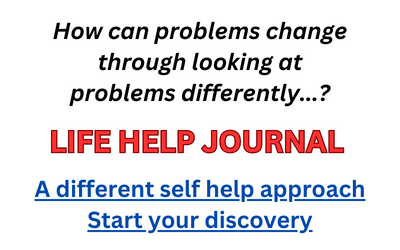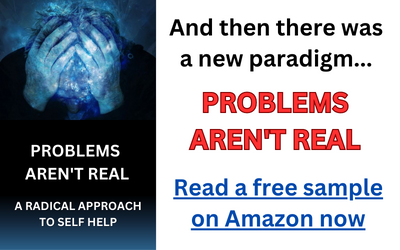I believe it can be reasonably argued that The Power of Now is the most effective and reliable self-help practice presently available. I believe this same argument can be made for A Course In Miracles.
Let’s consider these two help methods in more detail, and then compare.
First off The Power of Now is actually the title of a book, written by Eckhart Tolle. The gist of Tolle’s teachings, within The Power of Now and beyond, is that mind activity is what causes emotional suffering not — not ever — external circumstances or what should happen within the world. The end of suffering, according to Tolle, comes when we stop engaging mind activity. One way to do this is to remain present, or to stay grounded in the present moment. This is where the term The Power of Now comes from.
I do agree, wholly, with Tolle’s teachings about mind activity — thinking in particular — being the cause for suffering. I believe however that remaining continuously focused on the present moment is rather difficult to do. I consider another of Tolle’s recommended methods to be easier to carry out and just as effective, if not more so: to impartially observe thinking and emotion.
When we observe our thinking and emotion, not denying or trying to change it but simply observing, thinking and emotion loses a great deal of its charge. We are no longer empowering our thinking and emotion with a conviction of truth and / or unconsciously diving into it. We are creating a gap in our thinking and emotion, and peace comes through this space.
But while Tolle’s teachings, whether remaining present or being the witness to thought and emotion, do reduce the impact of mental activity they do not — in my experience — end the mental activity. So the impact of the mental activity will be lessened but the mental activity will go on nonetheless.
Here is where A Course In Miracles demonstrates a difference. A Course In Miracles practice, often referred to as forgiveness, dilutes the impact of mental activity as The Power of Now does, but it goes further and has a healing outcome. This isn’t to say that practicing A Course In Miracles (ACIM) forgiveness will bring instant and total elimination of negative mental patterns; it is certainly a process but it does, over time, feel like a healing of mental activity has taken place.
Before you consider ACIM to be the ideal technique however it’s important to know what the teaching advocates. A Course In Miracles, when it is properly interpreted, claims that the world is illusory and is really a bad dream, and the dream amounts to a separation from God.
To reiterate, the teaching states that the world is an illusion and is not real.
Are you ready to accept such an outlook? Most people are not. While The Power of Now does embrace the notion of a higher spirit it does not, to my understanding, outright call the world an illusion or a dream. The world as unreal is certainly a radical concept but it is the uncompromising teaching, and the foundation I believe, of ACIM.
The forgiveness practice of ACIM is to forgive our conflicts, internal and external, because they are illusions by definition as they occur in an illusory realm. I forgive what did not happen or what is not happening. It is not easy, and is certainly not common, to forgive perceived wrongdoings against us — and when there is forgiveness it is usually of the variety that you did something but I forgive you anyway and not, ‘Nothing happened in this illusory world.’
So while A Course In Miracles is practiced by scores of people it is not on par in its popularity with other help methods, including The Power of Now. Less popular does not mean less effective however, at least in the case of ACIM. It is a powerful technique and, I believe, it’s inevitable that more and more people will come to this extraordinary practice.
Learn more about A Course In Miracles Here.

